What Is Bland Diet? How To Do It And Benefits
You digestion can improve once you know what to consume and what to keep away from your plate.

Image: Shutterstock
A bland diet doesn’t mean you have to eat tasteless or plain food. It simply is a diet excluding all the irritant foods that can irritate the intestinal lining. The diet is mostly recommended for treating acidity, stomach ulcers, and diarrhea. In addition, people who have undergone intestinal surgery will often be put on this particular post-surgery diet to ease the recovery process (as greasy, salty, and spicy foods may worsen all these conditions) (1).

For a study to examine the worldwide prevalence of gastrointestinal disorders, data was collected from 33 countries and 73,076 adult respondents, 36,148 women (49.5%) and 36,928 men (50.5%), in the form of Internet and household surveys. The prevalences of different disorders in both sexes were as follows: esophageal reflux (3.2% and 1.2%), gastroduodenal stomach disorders (7.2% and 4.8%), bowel disorders (11.7% and 6.6%), and abdominal pain syndrome (0.02% and 0.05%).
This diet may also work for those who have breakouts, as spicy foods may trigger them. So, if you want to cut down on spicy and greasy food, this diet can be a perfect fit for you. But do not merely go by its name. You can get a range of tasty foods in this diet too.
Danielle, a blogger, shared how bland food and exercise helped her lose weight and improve her overall health in her blog post. She wrote. “By keeping my foods bland and basic, I was learning to feel full without the desire to over eat. My food was still tasty and I still enjoyed eating it, but delicious food made me want to eat more because I couldn’t get enough (i). “
Learn more about the bland diet, how it can benefit you, the dietary guidelines, foods to eat and avoid, the bland diet recipes, and a menu plan. We also have included a few yoga poses to ease your stomach problems. Continue reading.
 At A Glance: Bland Diet
At A Glance: Bland Diet- Principle: A balanced diet that is low in fiber and contains easily digestible and non-irritating foods that are gentle on the digestive system.
- Purpose: To ease digestion, minimize diarrhea, and reduce gastrointestinal irritation.
- Who It Is For: People with gastritis, peptic ulcers, or diarrhea and people recovering from any illness or surgery.
- Duration: Short-term
- Who Should Avoid: People who are allergic to wheat or white bread, are underweight, or have chronic kidney and cardiovascular issues.
- Cons: May cause constipation.
In This Article
1. Dietary Guidelines
You should take utmost care to avoid irritating the stomach walls and consume only a stomach-friendly diet. These dietary guidelines will help you understand what type of foods you should choose at home or while eating out. Take a look.
- Always eat cooked, boiled, broiled, microwaved, baked, stewed, roasted or creamed food. Do not eat fried, blanched, or raw food (1).
- Avoid using too much salt or seasoning.
- Do not eat the peel of fruits or nuts.
- Strain fruit or vegetable juices using a sieve.
- Avoid consuming citrus fruits or juices if they irritate your stomach (1).
- Avoid eating whole grain, multigrain, and wheat flour. Opt for white rice, white flour, white pasta, and white bread to avoid irritating the stomach lining (1).
- Avoid alcohol and smoking (1).
- Do not drink aerated drinks, pulpy fruit juices, and caffeinated drinks (2).
- Use low-fat dairy products (1).
- Eat low-fat meals and well-cooked lean proteins (1).
- Avoid non-steroidal, anti-inflammatory drugs and aspirin.
- Chew your food well before gulping it down.
- You can have 3-4 easy-to-digest meals per day, but be careful to snack only on the allowed foods.
Note: Remember, planning and prepping your meals in advance is key. It ensures you always have simple, non-irritating foods ready to go, helping you steer clear of anything that might upset your stomach or restrict your dietary goals.
 Quick Tip
Quick TipOpt for natural nutritious beverages like green tea or coconut water instead of sugary drinks.
Key Takeaways
- A bland diet is easy to digest and it reduces inflammation and promotes the healing of the intestinal lining.
- To prevent irritating the stomach walls, avoid using too much salt, alcohol, smoking, caffeine, and aerated beverages.
- Practice yoga asanas like Pashchimottanasana, Apanasana, and Pavanamuktasana to improve digestive health by reducing stress, and promoting circulation.
- To improve your digestive system’s health, it’s crucial to chew food thoroughly and properly sieve fruit or vegetable juices.
2. Foods To Eat And Avoid

| Food Group | Servings Per Day | Foods To Eat | Foods To Avoid |
| Fruits And Veggies | 2-3 | Sweet potato, waxed beans, pumpkins, carrots, beetroot, white potato, summer and winter squash, strained vegetable juice, avocado, banana, fruit juice without pulp, orange and grapefruit without the membrane and seeds, and apple without the peel. | Fried veggies, potato wafers, spicy veg preparations, fried potato, broccoli, spinach, Swiss chard, tomato, berries, and figs. |
| Proteins & Nuts | 2-3 | Soy, tofu, soy milk, soy yogurt, cod, trout, herring, soft boiled eggs, lean cuts of chicken, lamb, pork, peanut butter, groundnuts, and well-cooked and soft meat. | Greasy, spicy, and highly seasoned meat, fried chicken, fried fish, fried poultry, raw eggs, dry beans, sausages, ham, chunky peanut butter, nuts with the outer cover, pumpkin seeds, sunflower seeds, and flax seeds. |
| Carbs | 6-10 servings | White bread, flour pasta, white rice, rice noodles, flour spaghetti, flour flatbreads, rice wraps, flour biscuits, and cornbread. | Whole wheat bread, multigrain flour, multigrain bread, highly seasoned biscuits, multigrain biscuits, whole wheat cookies, cookies with dry fruits, popcorn, and brown rice. |
| Fats & Oils | In moderation | Butter, mayonnaise, margarine, olive oil, avocado dressing, cream cheese, sour cream, white sauce, cream sauce, and olive oil and dijon mustard dressing. | Animal fat, highly seasoned and high-calorie dressings, coconut oil. |
| Dairy | 2-3 servings | Buttermilk, low-fat milk, low-fat yogurt, condensed milk, pasteurized egg nogs, low-fat milk powder, mild cheeses, cottage cheese, and low-fat milk ricotta cheese. | Full-fat milk, full-fat yogurt, and strong cheeses. |
| Herbs & Spices | In moderation | Salt, olives, and mild spices. | Black pepper, cayenne pepper, chili, chili sauce, garam masala, allspice, clove, garlic, ginger, barbecue sauce, sweet chili sauce, strong lemon-based sauces, mustard seeds, and pickles. |
| Desserts & Sweets | In moderation | Honey, ice cream, seedless jam, syrup, molasses, chocolate, marshmallow, custard, white flour cakes, pudding, sherbet, hard candies, jelly, and gelatin dessert. | Marmalades, donuts, fried ice cream, chocolate with nuts, ice cream with nuts, desserts with fruits, and sweets made from full-fat milk. |
| Beverages | Water, buttermilk, coconut water, strained fruit and vegetable juices. | Coffee, energy drinks, tea, alcohol, fresh fruit juice with pulp, and lime juice. |
Once you have a clear idea about what foods you can consume and what to avoid, chalking a diet plan becomes easier. Here are 3 bland menus you can take a look at. Follow the one that suits you the best. You can also make your own diet chart depending on the foods you are allowed to eat.
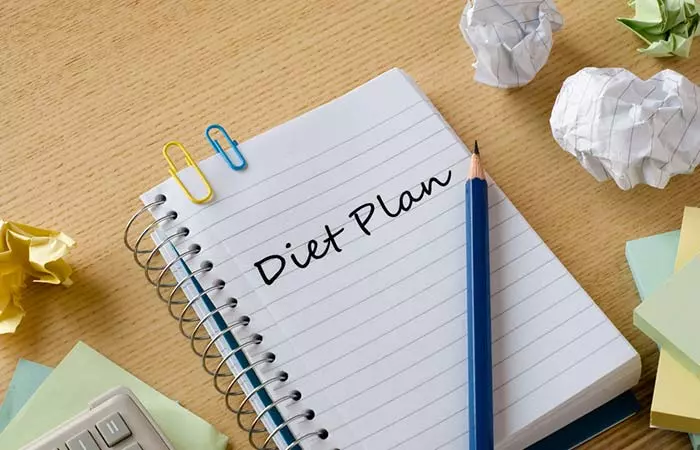
Menu 1
| Meal | What To Eat |
| Breakfast (8 am) | 2 slices of white bread with peanut butter and 1 banana |
| Lunch (12 pm) | Baked trout with carrots in canned pear sauce + white rice |
| Post Lunch Snack (4 pm) | ½ cup low-fat yogurt |
| Dinner (7:30 pm) | Flour spaghetti and tofu balls with butter and a sprinkle of herbs |
Menu 2
| Meal | What To Eat |
| Breakfast (8 am) | 1 scrambled egg + 1 toast with margarine + 1 cup strained carrot juice |
| Lunch (12 pm) | Roasted chicken breast with baked mushroom and asparagus |
| Post Lunch Snack (4 pm) | 1 banana |
| Dinner (7:30 pm) | Sweet potato salad with low-calorie dressing + boiled codfish |
Menu 3
| Meal | What To Eat |
| Breakfast (8 am) | 2 white flour and low-fat milk pancakes with maple syrup |
| Lunch (12 pm) | Blended squash and avocado soup |
| Post Lunch Snack (4 pm) | 1 cup strained fruit juice or buttermilk |
| Dinner (7:30 pm) | Macaroni with tuna and herbs |
You don’t have to survive on simple meals with limited ingredients if you are on a bland diet.
Feel free to customize the meals on these menus with recipes using ingredients within the allowed food groups. You can also experiment with different cooking methods like steaming, baking, and roasting to find new, satisfying ways to enjoy simple, wholesome foods. For instance, try roasting vegetables for a smoky flavor or steaming them for a no-oil option.
It is best that you cook your meals to avoid consuming foods that should be avoided by you. Here is a yummy bland diet recipe that will hit your taste buds with a myriad of flavors.
4. Easy Bland Diet Recipe
Spaghetti And Tofu Balls
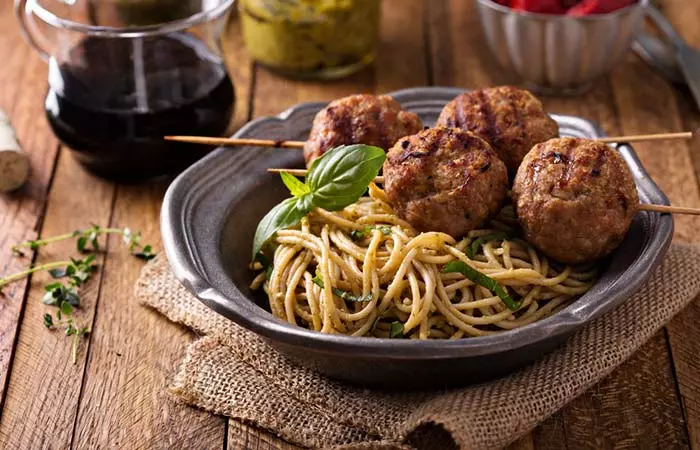
Ingredients
- 3 oz spaghetti
- A large pot of water
- 3 oz mashed tofu
- 1 teaspoon flour
- 1 teaspoon butter
- 1 egg
- 1 teaspoon milk
- ½ teaspoon mixed herbs
- Cooking spray
- 3-4 teaspoons salt
- 2 tablespoons grated American cheddar cheese
How To Cook
- Preheat the oven at 180°C.
- Mix flour, salt, and a pinch of mixed herbs with the mashed tofu.
- Shape the dough into small balls.
- Spray a baking tray with cooking spray.
- Place the tofu balls on the tray and spray them with the cooking spray.
- Bake them for 10-15 minutes at 140°C.
- Boil a large pot of water and add
- A teaspoon each of salt and olive oil to it.
- Add the spaghetti and let it cook for about 10 minutes.
- Drain the water from the spaghetti and transfer it to a mixing bowl.
- Prepare the sauce by mixing the egg, milk, butter, and mixed herbs.
- Cook it in a frying pan on high flame for a minute. Keep stirring.
- Pour the sauce over the spaghetti and mix well.
- Drop in the baked tofu balls.
- Top it with grated American cheddar cheese.
Though your diet plays a vital role when it comes to curing intestinal irritation and digestion problems, yoga has also been known to cure a lot of diseases effectively. Here are 5 yoga poses that will help alleviate the pain and discomfort that usually accompany stomach problems.
 Quick Tip
Quick Tip5. Yoga For Treating Stomach Ailments
1. Apanasana

- Lie on your back and draw your knees to your chest.
- Clasp your knees with your hands.
- Rock from side to side. Hold the position for 1-2 minutes and then leave your hands.
- Repeat this 5 times.
2. Pashchimottanasana

- Sit on the floor with your legs straight in front of you.
- Slowly lower your upper torso to touch your toes.
- Remove your hands from the toes and place them on the floor beside your feet.
- Hold the position for 1-2 minutes.
- Repeat this 3 times.
3. Kapalbhati

- Sit on the floor and fold your legs. Place your hands on your knees such that your palms face the sky.
- Keep your spine erect and close your eyes.
- Take a deep breath and exhale forcefully so that your stomach goes inside as you exhale.
- Relax your mind, and while you exhale, think about all your ailments being exhaled out.
- Do this for 5 minutes.
- Gradually increase the time to 15 minutes.
4. Pavanamuktasana

- Lie on your back. Relax.
- Inhale. Fold your legs and bring them forward until your forehead touches your knee.
- Place your arms around your legs and lock your fingers.
- Hold this position for 30 seconds.
- Exhale slowly and come back to your original position.
- Repeat this 3-4 times.
5. Vajrasana

- Sit on the floor. Fold your legs and tuck them under your thighs.
- Close your eyes and keep your spine erect.
- Position your palms on your knees.
- Inhale and exhale slowly.
- Repeat 5 times.
6. Bhujangasana

- Lie down on your stomach.
- Keep your toes flat and your forehead resting on the ground.
- Place your hands beside your shoulders, with palms on the ground and elbows close to your body.
- Inhale as you lift your head, chest, and abdomen off the floor.
- Arch your back and look up.
- Exhale and gently lower your body back down.
- Do this 3 times.
7. Ardha Matsyendrasana

- Sit in a cross-legged position with your back straight.
- Cross your right leg over your left knee.
- Bend your left hand, place the elbow on the right knee, and put your right hand behind you.
- Twist your upper body to the right.
- Look over your right shoulder but remember to not strain your neck.
- Slowly twist your upper body back to the starting position.
- Repeat on the other side.
- Do this 3 times on each side.
Infographic: The Bland Diet Guidelines
The bland diet is uniquely designed to allow your digestive system a much-needed reprieve. Everything you consume as part of this diet should be easy to digest and not irritate your stomach lining. We have summarized the guidelines for the bland diet in an infographic for your quick reference. Check it out below.

Illustration: StyleCraze Design Team
A bland diet comprises non-irritating meals that are easy on your stomach or intestinal lining and eliminates greasy, salty, and spicy delicacies. It includes easy-to-digest foods that go easy on your digestive system, eliminating any discomfort and irritation. It is usually used to treat acidity and stomach ulcers. This diet predominantly comprises well-cooked, boiled, broiled, baked, microwaved, stewed, or roasted, non-spicy foods. It is important to chew these foods properly to avoid burdening your digestive system. Avoid whole grain, fried, and raw foods, alcohol, smoking, citrus fruits, and aerated and caffeinated drinks as they can irritate your intestinal lining and cause discomfort. Follow the simple bland diet menus listed above, along with some effective yoga poses, to keep your stomach clean and healthy.
Frequently Asked Questions
Can you eat mashed potatoes on a bland diet?
Yes, mashed potatoes make for a good meal option on a bland diet.
Can I eat a sandwich on a bland diet?
Yes, you can eat white bread sandwich with chicken, tuna, turkey, roast beef, or salmon along with some lettuce and tomato.
Is chicken noodle soup considered bland?
Yes, you can have chicken noodle soup with mild seasonings as part of your bland diet.
Illustration: What Is Bland Diet? How To Do It And Benefits
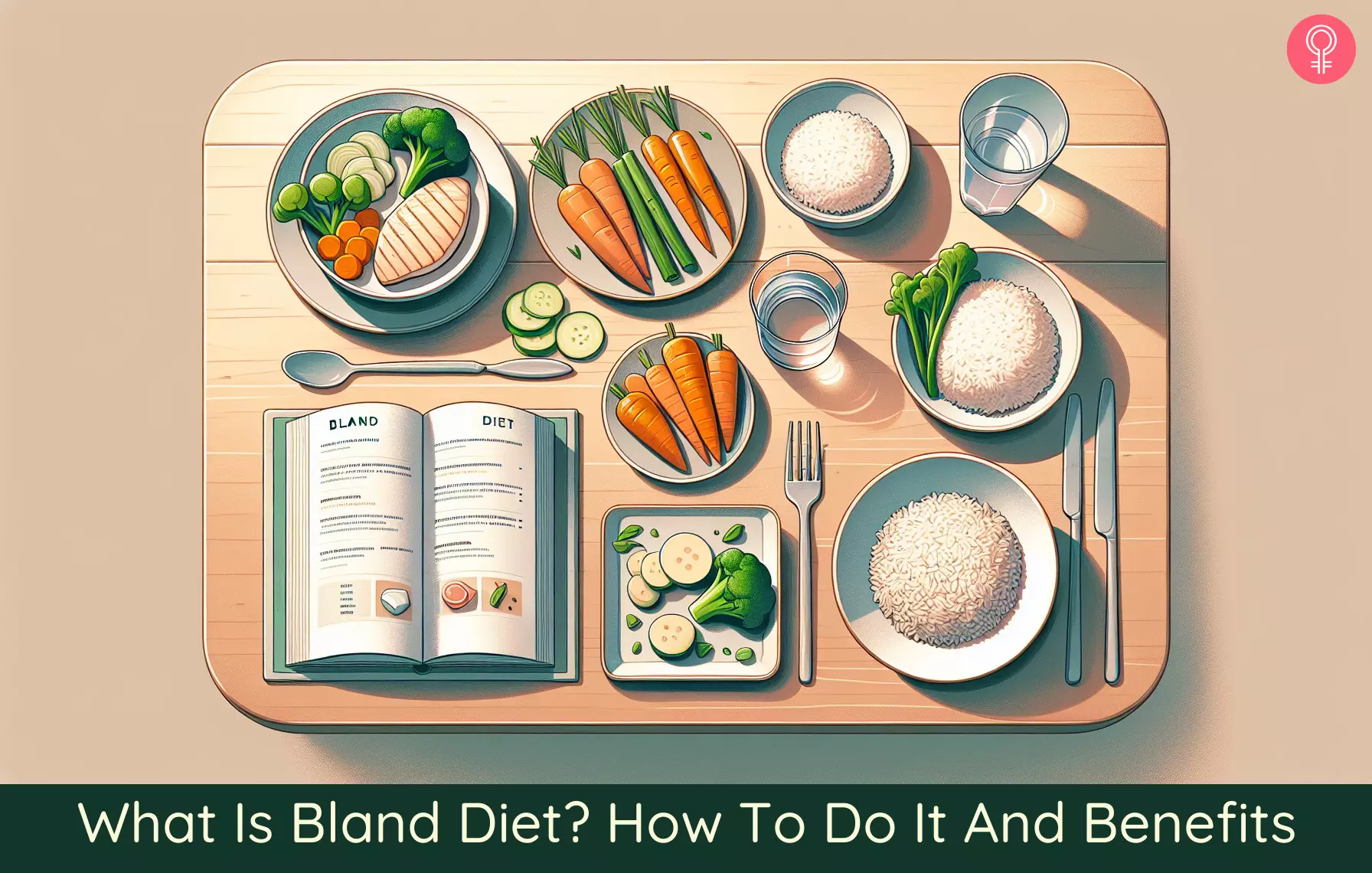
Image: Dall·E/StyleCraze Design Team
A bland diet may not sound exciting, but it can effectively help manage a troubled digestive system. Watch the video below to learn more about what goes into the diet and how it can benefit your health.
Personal Experience: Source
StyleCraze's articles are interwoven with authentic personal narratives that provide depth and resonance to our content. Below are the sources of the personal accounts referenced in this article.
i. A WEIGHTY ISSUEhttps://danielledavis01.wordpress.com/2025/03/12/a-weighty-issue/
References
Articles on StyleCraze are backed by verified information from peer-reviewed and academic research papers, reputed organizations, research institutions, and medical associations to ensure accuracy and relevance. Read our editorial policy to learn more.
Read full bio of Madhu Sharma
Read full bio of Ravi Teja Tadimalla
Read full bio of Payal Karnik






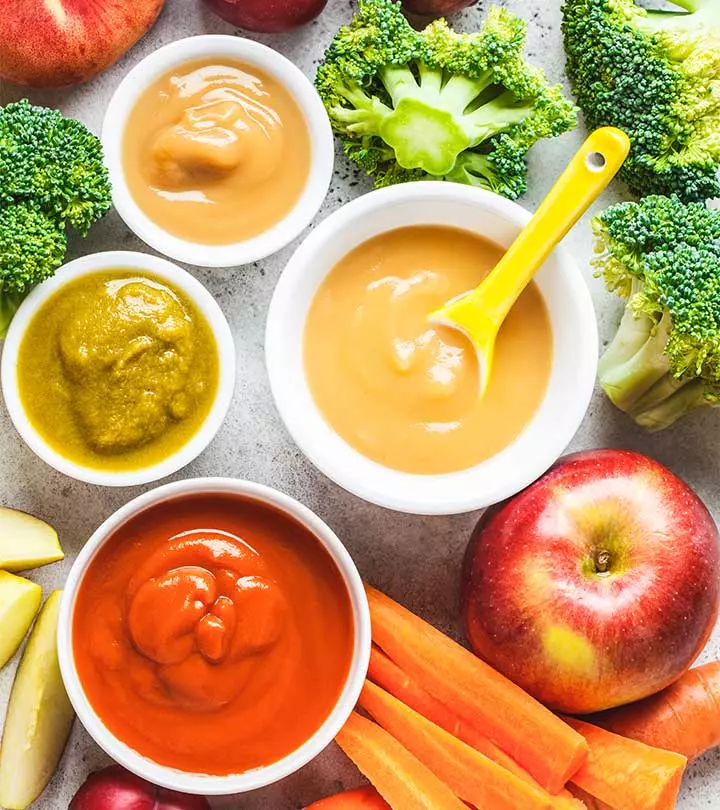




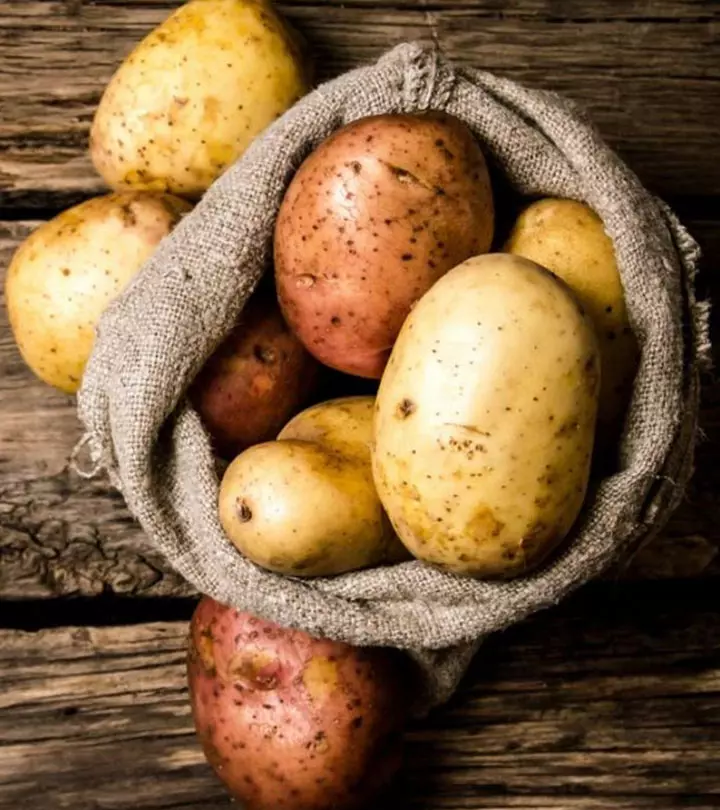
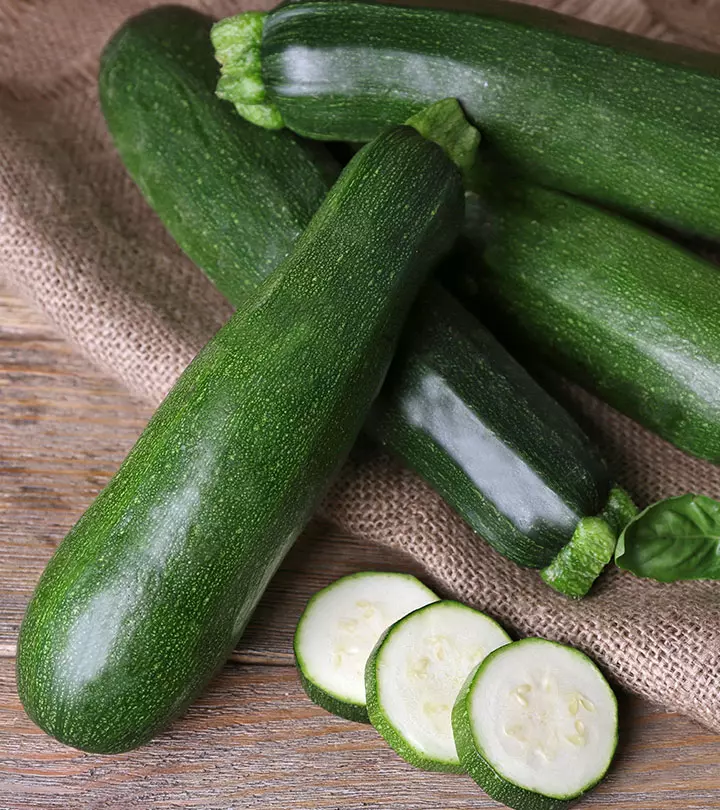
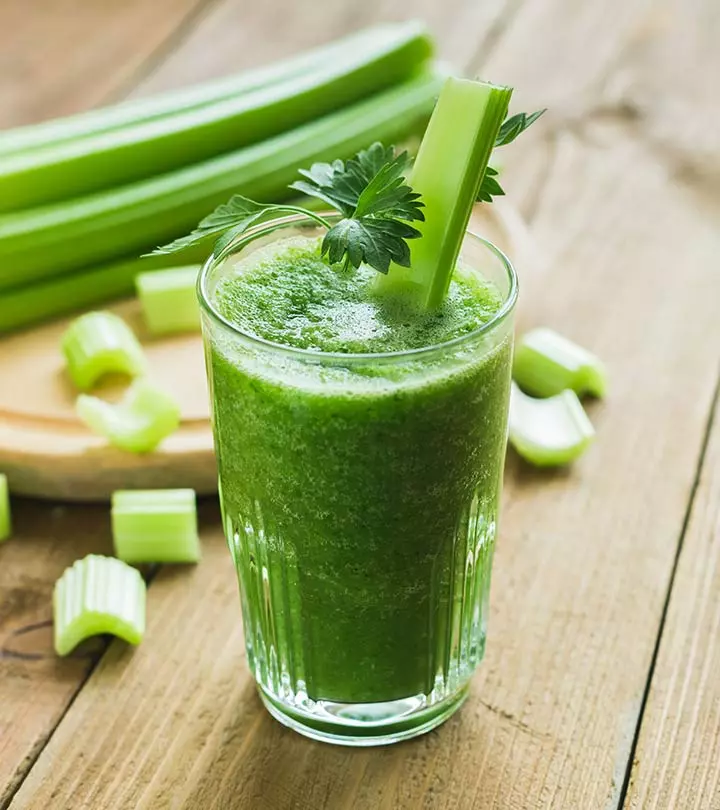
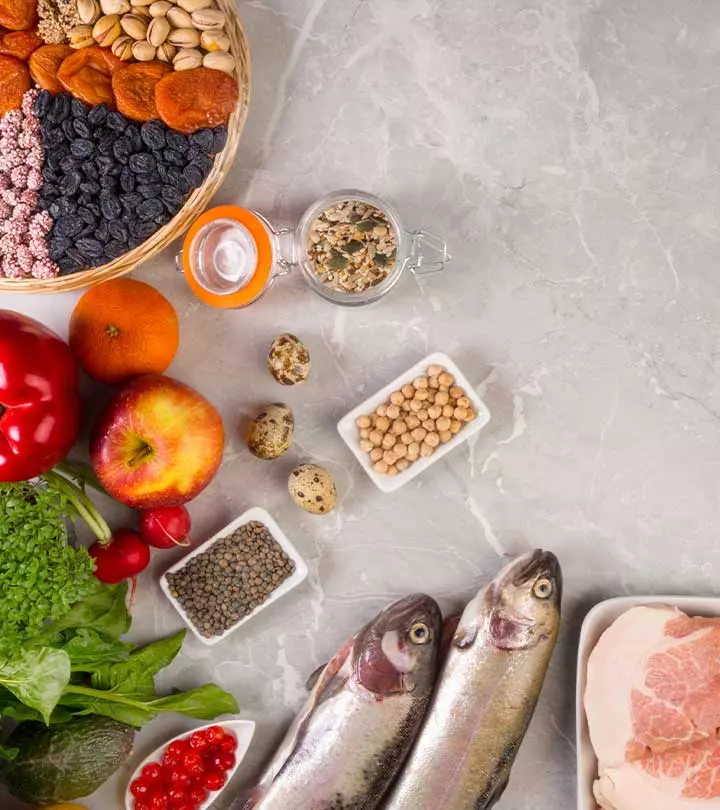
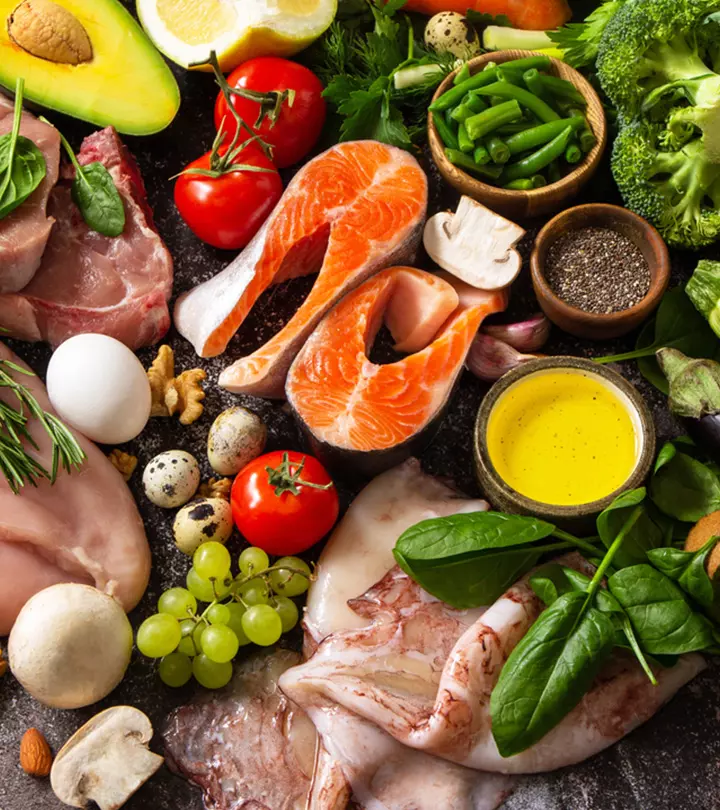
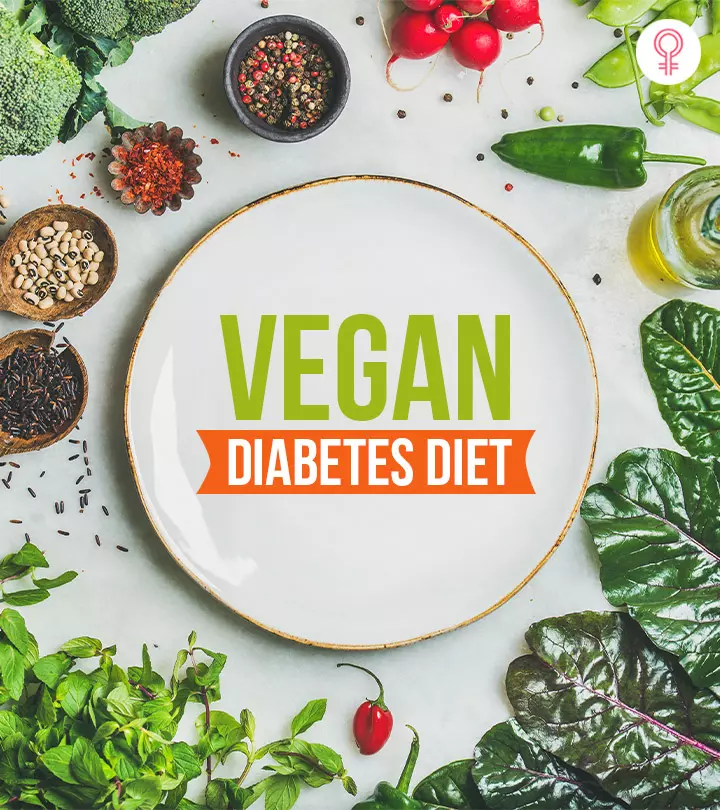
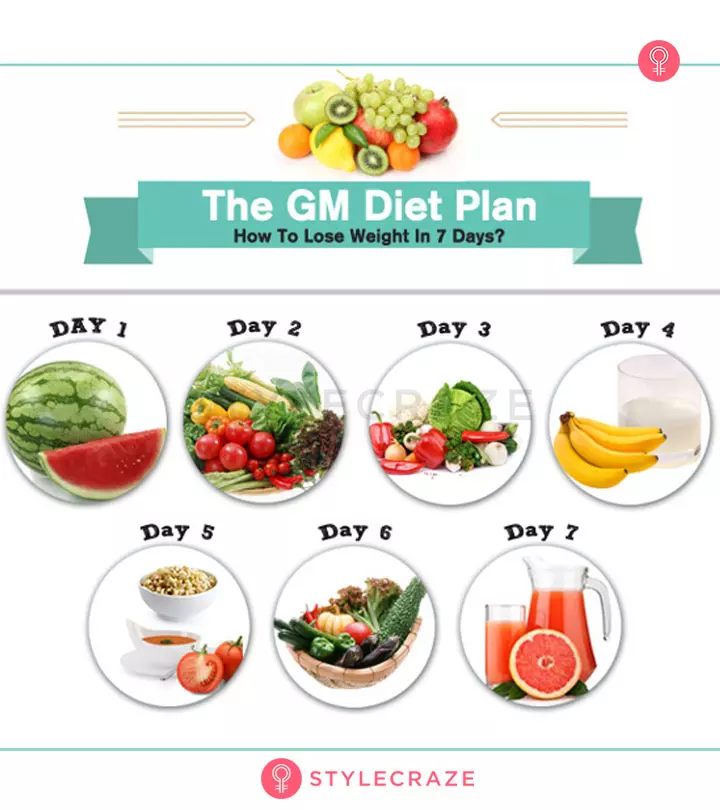
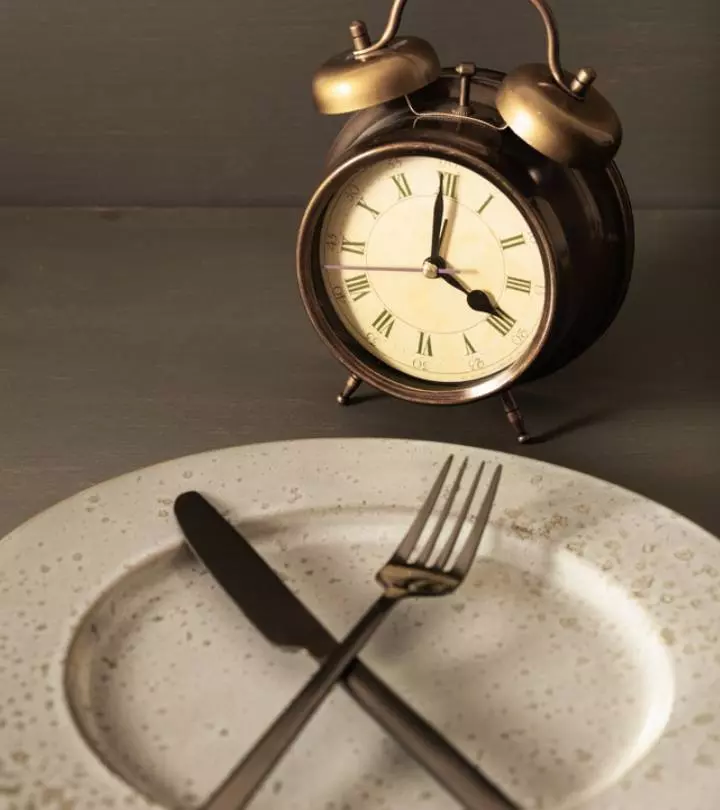
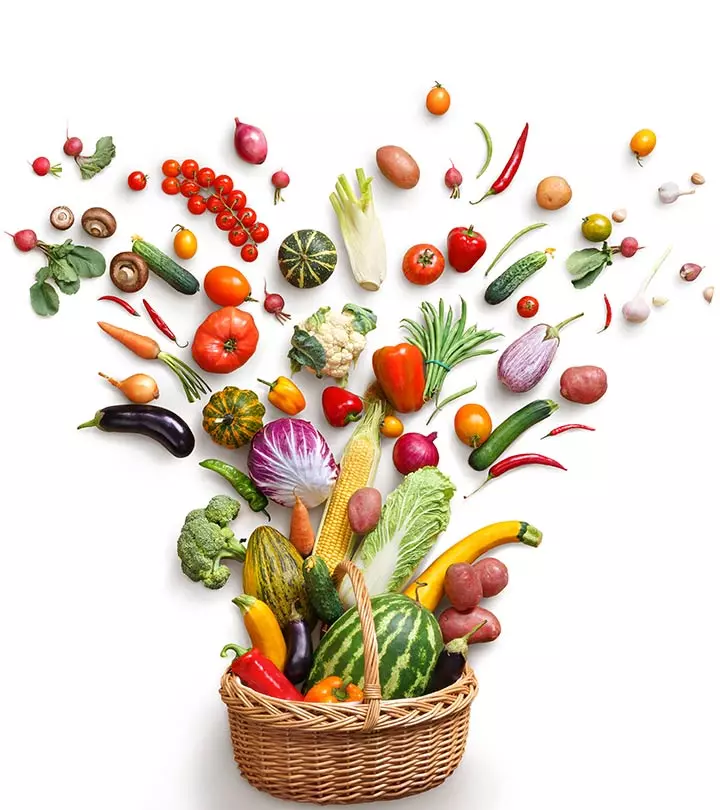




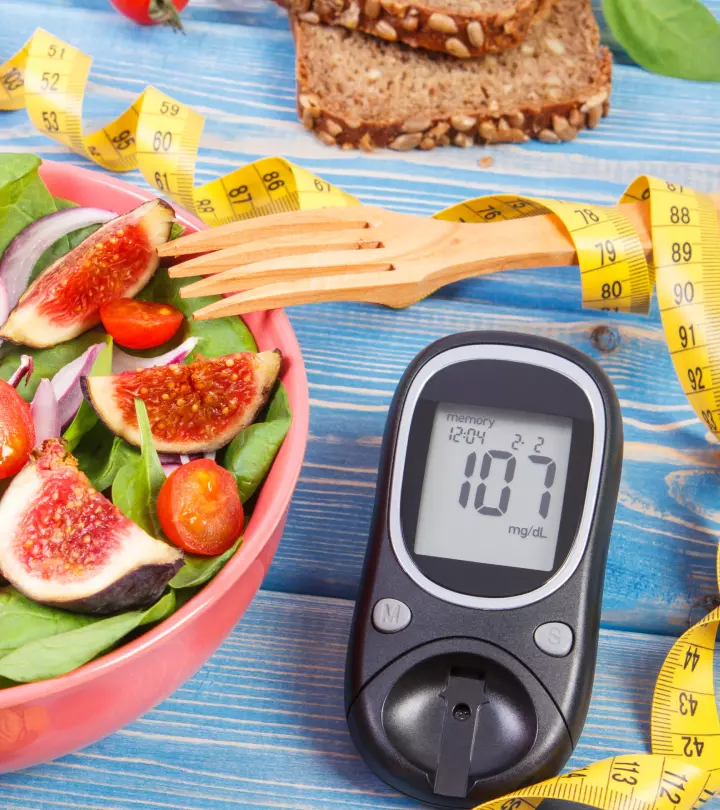
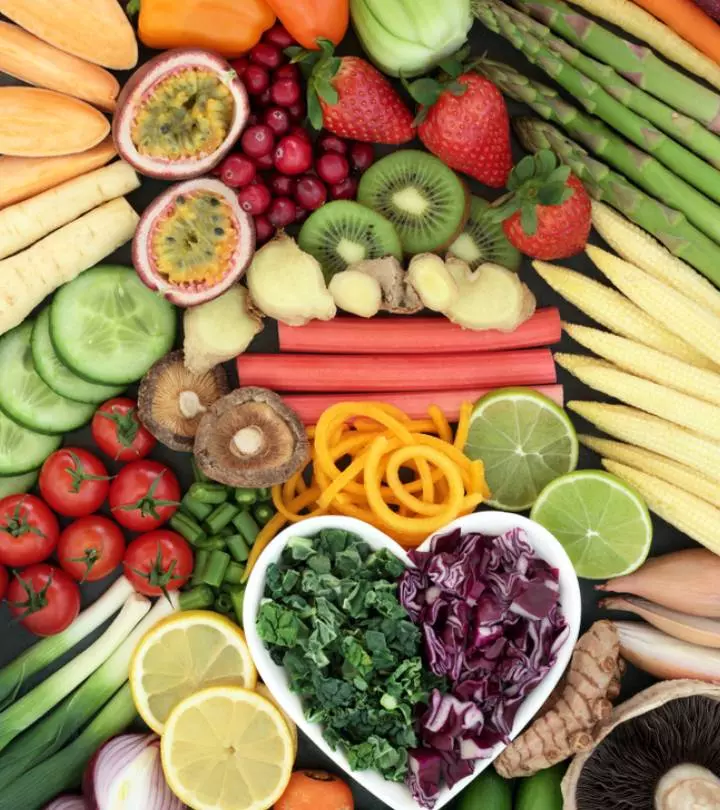

Community Experiences
Join the conversation and become a part of our empowering community! Share your stories, experiences, and insights to connect with other beauty, lifestyle, and health enthusiasts.